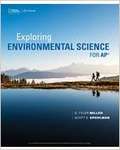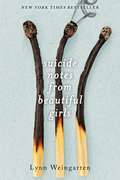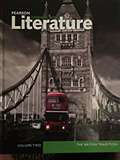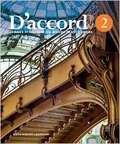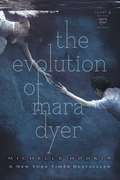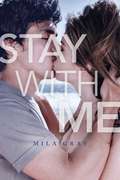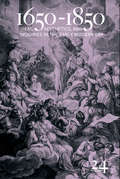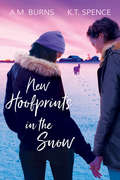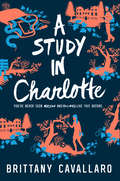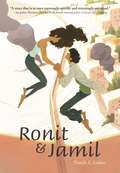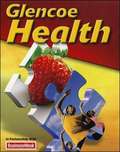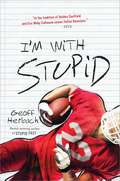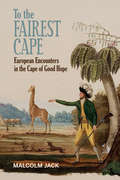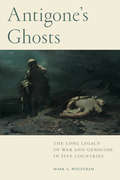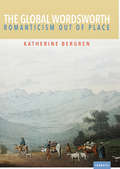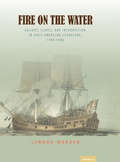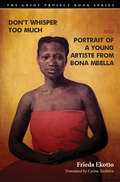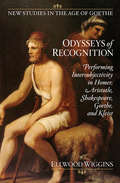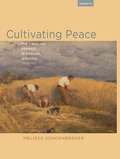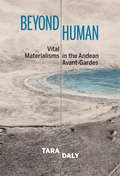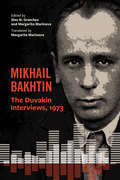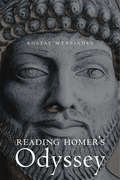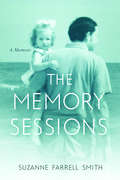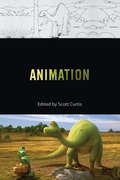- Table View
- List View
Exploring Environmental Science for AP®
by G. Miller Scott SpoolmanNIMAC-sourced textbook <P><P>Written specifically for the AP Environmental Science course, authors Tyler Miller and Scott Spoolman connect the themes of economics, politics, ethics, policy, and sustainability together for an engaging and thorough presentation of environmental science concepts. Features to assist students in preparing for the AP exam for Environmental Science include Multiple Choice and Free-Response review questions at the end of each chapter and unit, and a full AP Practice Test at the end of the book.
Suicide Notes from Beautiful Girls
by Lynn WeingartenThey say Delia burned herself to death in her stepfather’s shed. They say it was suicide.<P><P> But June doesn’t believe it.<P> June and Delia used to be closer than anything. Best friends in that way that comes before everyone else—before guys, before family. It was like being in love, but more. They had a billion secrets, binding them together like thin silk cords.<P> But one night a year ago, everything changed. June, Delia, and June’s boyfriend Ryan were just having a little fun. Their good time got out of hand. And in the cold blue light of morning, June knew only this—things would never be the same again.<P> And now, a year later, Delia is dead. June is certain she was murdered. And she owes it to her to find out the truth…which is far more complicated than she ever could have imagined. <P> Sexy, dark, and atmospheric, Suicide Notes from Beautiful Girls will keep you guessing until the very last page.
Pearson Common Core Literature: The British Tradition
by Diane Fettrow Kelly Gallagher Ernest Morrell Karen Wixson Grant Wiggins Elfrieda Hiebert William Brozo Donald LeuPearson Common Core Literature The British Tradition
D'accord! 2 Langue et Culture du Monde Francophone, [Level 2]
by Vista LearningNIMAC-sourced textbook
Dinner Made Simple: 35 Everyday Ingredients, 350 Easy Recipes
by The Editors of Real SimpleThink you'll never win at weeknight cooking? Think again. Your favorite ingredients are deliciously reimagined in Real Simple's latest cookbook that shows you how to spin 35 family staples into hundreds of hassle-free dishes. Organized from apples to zucchini, Dinner Made Simple is filled with 350 easy, quick dishes-many ready in 30 minutes or less-to help you get out of your recipe rut. With 10 ideas for every ingredient, you'll never look at a box of spaghetti, a bunch of carrots, or a ball of pizza dough the same way again.With helpful advice on buying and storing ingredients, genius kitchen tips, nutritional information for every recipe, and a complete dessert section (yes!), Dinner Made Simple is your new go-to resource for creating inspiring dishes all week long.
The Evolution of Mara Dyer: The Unbecoming Of Mara Dyer; The Evolution Of Mara Dyer; The Retribution Of Mara Dyer (Mara Dyer #2)
by Michelle HodkinThe truth about Mara Dyer's dangerous and mysterious abilities continues to unravel in this gripping sequel to the thrilling The Unbecoming of Mara Dyer. Mara Dyer once believed she could run from her past. She can't. She used to think her problems were all in her head.T hey aren't. She couldn't imagine that after everything she's been through, the boy she loves would still be keeping secrets. She's wrong. In this gripping sequel to The Unbecoming of Mara Dyer, the truth evolves and choices prove deadly. What will become of Mara Dyer next?
Stay with Me: Come Back To Me; Stay With Me; Run Away With Me
by Mila GrayFrom the author of Come Back to Me comes a heartwrenching novel about a forbidden romance, a wounded marine, and the girl who's determined to save him.Didi Monroe has waited her whole life for happily ever after. So when charming Zac Ridgemont sweeps her off her feet, Didi believes she might finally have met the one. Until she begins an internship at a military hospital in California. There she meets wounded marine Noel Walker. Frustrated on the outside and broken on the inside, Walker's an irritating patient who refuses any care, keeping his distance from everything and everyone--including Didi. Walker is strictly out of bounds. Didi knows this, respects this, but the more she tries to help Walker the closer the two grow. Soon neither one can ignore the sparks flying between them as their attraction simmers into dangerous territory. But Walker doesn't believe in love or happily ever after--not after what he's seen. Not after what he's been through. He doesn't want to hurt Didi, but he doesn't want to push her away either. She makes him feel peaceful. Hopeful, even. Then tragedy hits, shattering both their worlds, and Didi realizes that love isn't as simple as happily ever after. Love isn't easy. It's difficult. Messy. Complicated. Now all Didi has to do is decide if it's worth fighting for.
1650-1850: Ideas, Aesthetics, and Inquiries in the Early Modern Era (Volume 24) (1650-1850 Ser. #Vol. 4)
by Kevin L. Cope1650-1850 publishes essays and reviews from and about a wide range of academic disciplines—literature (both in English and other languages), philosophy, art history, history, religion, and science. Interdisciplinary in scope and approach, 1650-1850 emphasizes aesthetic manifestations and applications of ideas, and encourages studies that move between the arts and the sciences—between the “hard” and the “humane” disciplines. The editors encourage proposals for “special features” that bring together five to seven essays on focused themes within its historical range, from the Interregnum to the end of the first generation of Romantic writers. While also being open to more specialized or particular studies that match up with the general themes and goals of the journal, 1650-1850 is in the first instance a journal about the artful presentation of ideas that welcomes good writing from its contributors. First published in 1994, 1650-1850 is currently in its 24th volume. ISSN 1065-3112. Published by Bucknell University Press. Distributed worldwide by Rutgers University Press.
New Hoofprints in the Snow
by K. T. Spence A. M. BurnsCan giving up one friend lead to the discovery of an even deeper bond? Maia’s horse, Selena, is her best friend. Unfortunately, when Maia’s brother suffers a serious accident, an already strained financial situation reaches the breaking point, and the family simply can’t care for Selena. The horse will have to go to a rescue center. It’s there that Maia meets Emma, whose mother owns the center. Emma understands Maia’s attachment to Selena, and the two girls spend time together caring for the animals on the ranch and riding. Emma even thinks she knows a way to help Maia’s brother deal with his handicap. They become fast friends—but when Emma confesses that she would like to be more, Maia isn’t sure she can fly in the face of family expectations. Even if she’s attracted to Emma, she’s been raised with marriage and children in mind. And since Emma isn’t the only one interested in Maia, Maia has a difficult decision to make. Who does she want to ride off into the sunset with?
A Study in Charlotte (Charlotte Holmes Novel #1)
by Brittany Cavallaro<p>The first book in a witty, suspenseful new trilogy about a brilliant new crime-solving duo: the teen descendants of Sherlock Holmes and John Watson. This clever page-turner will appeal to fans of Maureen Johnson and Ally Carter. <p>Jamie Watson has always been intrigued by Charlotte Holmes; after all, their great-great-great-grandfathers are one of the most infamous pairs in history. But the Holmes family has always been odd, and Charlotte is no exception. She's inherited Sherlock's volatility and some of his vices--and when Jamie and Charlotte end up at the same Connecticut boarding school, Charlotte makes it clear she's not looking for friends. <p>But when a student they both have a history with dies under suspicious circumstances, ripped straight from the most terrifying of the Sherlock Holmes stories, Jamie can no longer afford to keep his distance. Danger is mounting and nowhere is safe--and the only people they can trust are each other.</p>
Ronit and Jamil
by Pamela L. Laskin<p>Pamela L. Laskin’s beautiful and lyrical novel in verse delivers a fresh and captivating retelling of Shakespeare’s Romeo and Juliet that transports the star-crossed lovers to the modern-day Israel-Palestine conflict. <p>Ronit, an Israeli girl, lives on one side of the fence. Jamil, a Palestinian boy, lives on the other side. Only miles apart but separated by generations of conflict—much more than just the concrete blockade between them. Their fathers, however, work in a distrusting but mutually beneficial business arrangement, a relationship that brings Ronit and Jamil together. And lightning strikes. The kind of lightning that transcends barrier fences, war, and hatred. <p>The teenage lovers fall desperately into the throes of forbidden love, one that would create an irreparable rift between their families if it were discovered. But a love this big can only be kept secret for so long. Ronit and Jamil must face the fateful choice to save their lives or their loves, as it may not be possible to save both.</p>
Glencoe Health Student Edition 2011 (Glencoe Health)
by McGraw-Hill Education StaffGlencoe Health: A Guide to Wellness
I'm With Stupid (Felton Reinstein #3)
by Geoff HerbachFelton Reinstein has never been good with stress. Which is why he's seriously freaking out. Revealing his college choice on national TV? It's a heart attack waiting to happen. Deciding on a major for the next four years of his life? Ridiculous. He barely even knows who he is outside of football. And so...he embarks on The Epic Quest to Be Meaningful.
To the Fairest Cape: European Encounters in the Cape of Good Hope
by Malcolm JackCrossing the remote, southern tip of Africa has fired the imagination of European travellers from the time Bartholomew Dias opened up the passage to the East by rounding the Cape of Good Hope in 1488. Dutch, British, French, Danes, and Swedes formed an endless stream of seafarers who made the long journey southwards in pursuit of wealth, adventure, science, and missionary, as well as outright national, interest. Beginning by considering the early hunter-gatherer inhabitants of the Cape and their culture, Malcolm Jack focuses in his account on the encounter that the European visitors had with the Khoisan peoples, sometimes sympathetic but often exploitative from the time of the Portuguese to the abolition of slavery in the British Empire in 1833. This commercial and colonial background is key to understanding the development of the vibrant city that is modern Cape Town, as well as the rich diversity of the Cape hinterland. Published by Bucknell University Press. Distributed worldwide by Rutgers University Press.
Antigone's Ghosts: The Long Legacy of War and Genocide in Five Countries
by Mark A. WolfgramSophocles' play Antigone is a starting point for understanding the perpetual problems of human societies, families, and individuals, who are caught up in the terrible aftermath of mass violence. What is one to do after the killing has stopped? What can be done to prevent a round of new violence? The tragic and dramatic tension in the play is put in motion by setting an unyielding Antigone against King Creon. As we see through the investigation of how Germany, Japan, Spain, Yugoslavia and Turkey have dealt with their histories of mass violence and genocide in the 20th century, the forces represented by Antigone and Creon remain very much part of our world today. Through a comparison of the five countries, their political institutions, and cultural traditions, we begin to appreciate the different pathways that societies have taken when confronting their violent histories. Published by Bucknell University Press. Distributed worldwide by Rutgers University Press.
The Global Wordsworth: Romanticism Out of Place (Transits: Literature, Thought & Culture 1650-1850)
by Katherine BergrenThe Global Wordsworth charts the travels of William Wordsworth’s poetry around the English-speaking world. But, as Katherine Bergren shows, Wordsworth’s afterlives reveal more than his influence on other writers; his appearances in novels and essays from the antebellum U.S. to post-Apartheid South Africa change how we understand a poet we think we know. Bergren analyzes writers like Jamaica Kincaid, J. M. Coetzee, and Lydia Maria Child who plant Wordsworth in their own writing and bring him to life in places and times far from his own—and then record what happens. By working beyond narratives of British influence, Bergren highlights a more complex dynamic of international response, in which later writers engage Wordsworth in conversations about slavery and gardening, education and daffodils, landscapes and national belonging. His global reception—critical, appreciative, and ambivalent—inspires us to see that Wordsworth was concerned not just with local, English landscapes and people, but also with their changing place in a rapidly globalizing world. This study demonstrates that Wordsworth is not tangential but rather crucial to our understanding of Global Romanticism. Published by Bucknell University Press. Distributed worldwide by Rutgers University Press.
Fire on the Water: Sailors, Slaves, and Insurrection in Early American Literature, 1789-1886 (Transits: Literature, Thought & Culture 1650-1850)
by Lenora WarrenLenora Warren tells a new story about the troubled history of abolition and slave violence by examining representations of shipboard mutiny and insurrection in late eighteenth- and early nineteenth-century Anglo-American and American literature. Fire on the Water centers on five black sailors, whose experiences of slavery and insurrection either inspired or found resonance within fiction: Olaudah Equiano, Denmark Vesey, Joseph Cinqué, Madison Washington, and Washington Goode. These stories of sailors, both real and fictional, reveal how the history of mutiny and insurrection is both shaped by, and resistant to, the prevailing abolitionist rhetoric surrounding the efficacy of armed rebellion as a response to slavery. Pairing well-known texts with lesser-known figures (Billy Budd and Washington Goode) and well-known figures with lesser-known texts (Denmark Vesey and the work of John Howison), this book reveals the richness of literary engagement with the politics of slave violence. Published by Bucknell University Press. Distributed worldwide by Rutgers University Press.
Don't Whisper Too Much and Portrait of a Young Artiste from Bona Mbella (The Griot Project Book Series)
by Frieda Ekotto Lindsey Green-SimmsDon’t Whisper Too Much was the first work of fiction by an African writer to present love stories between African women in a positive light. Bona Mbella is the second. In presenting the emotional and romantic lives of gay, African women, Ekotto comments upon larger issues that affect these women, including Africa as a post-colonial space, the circulation of knowledge, and the question of who writes history. In recounting the beauty and complexity of relationships between women who love women, Ekotto inscribes these stories within African history, both past and present. Don’t Whisper Too Much follows young village girl Ada’s quest to write her story on her own terms, outside of heteronormative history. Bona Mbella focuses upon the life of a young woman from a poor neighborhood in an African megalopolis. And “Panè,” a love story, brings the many themes from Don’t Whisper Much and Bona Mbella together as it explores how emotional and sexual connections between women have the power to transform, even in the face of great humiliation and suffering. Each story in the collection addresses how female sexuality is often marked by violence, and yet is also a place for emotional connection, pleasure and agency. Published by Bucknell University Press. Distributed worldwide by Rutgers University Press.
Odysseys of Recognition: Performing Intersubjectivity in Homer, Aristotle, Shakespeare, Goethe, and Kleist (New Studies in the Age of Goethe)
by Ellwood WigginsLiterary recognition is a technical term for a climactic plot device. Odysseys of Recognition claims that interpersonal recognition is constituted by performance, and brings performance theory into dialogue with poetics, politics, and philosophy. By observing Odysseus figures from Homer to Kleist, Ellwood Wiggins offers an alternative to conventional intellectual histories that situate the invention of the interior self in modernity. Through strategic readings of Aristotle, this elegantly written, innovative study recovers an understanding of interpersonal recognition that has become strange and counterintuitive. Penelope in Homer’s Odyssey offers a model for agency in ethical knowledge that has a lot to teach us today. Early modern and eighteenth-century characters, meanwhile, discover themselves not deep within an impenetrable self, but in the interpersonal space between people in the world. Recognition, Wiggins contends, is the moment in which epistemology and ethics coincide: in which what we know becomes manifest in what we do. Published by Bucknell University Press. Distributed worldwide by Rutgers University Press.
Cultivating Peace: The Virgilian Georgic in English, 1650-1750 (Transits: Literature, Thought & Culture 1650-1850)
by Melissa SchoenbergerDuring the decades following the English civil wars, British poets seeking to make sense of lingering political instabilities turned to Virgil’s Georgics. This ancient poem betrays deep ambivalences about war, political power, and empire, and such poets as Andrew Marvell, John Dryden, and Anne Finch found in these attitudes valuable ways of responding to the uncertainties of their own time. Composed during a period of brutal conflict in Rome, Virgil’s agricultural poem distrusts easy stability, urging its readers to understand that lasting peace must be sowed, tended, reaped, and replanted, year after year. Like the ancient poet, who famously depicted a farmer’s scythe suddenly recast as a sword, the poets discussed in Cultivating Peace imagine states of peace and war to be fundamentally and materially linked. In distinct ways, they dismantle the dream of the golden age renewed, proposing instead that peace must be sustained by constant labor. Published by Bucknell University Press. Distributed worldwide by Rutgers University Press.
Beyond Human: Vital Materialisms in the Andean Avant-Gardes (Bucknell Studies in Latin American Literature and Theory)
by Tara DalyIn the Andes, indigenous knowledge systems based on the relationships between different beings, both earthly and heavenly, animal and plant, have been central to the organization of knowledge since precolonial times. The legacies of colonialism and the continuance of indigenous cultures makes the Andes a unique place from which to think about art and social change as ongoing, and as encompassing more than an exclusively human perspective. Beyond Human revises established readings of the avant-gardes in Peru and Bolivia as humanizing and historical. By presenting fresh readings of canonical authors like César Vallejo, José María Arguedas, and Magda Portal and through analysis of newer artist-activists like Julieta Paredes, Mujeres Creando Comunidad, and Alejandra Dorado, Daly argues instead that avant-gardes complicate questions of agency and contribute to theoretical discussions on vital materialisms: the idea that life happens between animate and inanimate beings—human and non-human—and is made sensible through art. Published by Bucknell University Press. Distributed worldwide by Rutgers University Press.
Mikhail Bakhtin: The Duvakin Interviews, 1973
by Mikhail BakhtinWhenever Bakhtin, in his final decade, was queried about writing his memoirs, he shrugged it off. Unlike many of his Symbolist generation, Bakhtin was not fascinated by his own self-image. This reticence to tell his own story was the point of access for Viktor Duvakin, Mayakovsky scholar, fellow academic, and head of an oral history project, who in 1973 taped six interviews with Bakhtin over twelve hours. They remain our primary source of Bakhtin’s personal views: on formative moments in his education and exile, his reaction to the Revolution, his impressions of political, intellectual, and theatrical figures during the first two decades of the twentieth century, and his non-conformist opinions on Russian and Soviet poets and musicians. Bakhtin's passion for poetic language and his insights into music also come as a surprise to readers of his essays on the novel. One remarkable thread running through the conversations is Bakhtin's love of poetry, masses of which he knew by heart in several languages. Mikhail Bakhtin: The Duvakin Interviews, 1973, translated and annotated here from the complete transcript of the tapes, offers a fuller, more flexible image of Bakhtin than we could have imagined beneath his now famous texts. Published by Bucknell University Press. Distributed worldwide by Rutgers University Press.
Reading Homer’s Odyssey
by Kostas MyrsiadesHomer’s Odyssey is the first great travel narrative in Western culture. A compelling tale about the consequences of war, and about redemption, transformation, and the search for home, the Odyssey continues to be studied in universities and schools, and to be read and referred to by ordinary readers. Reading Homer’s Odyssey offers a book-by-book commentary on the epic’s themes that informs the non-specialist and engages the seasoned reader in new perspectives. Among the themes discussed are hospitality, survival, wealth, reputation and immortality, the Olympian gods, self-reliance and community, civility, behavior, etiquette and technology, ease, inactivity and stagnation, Penelope’s relationship with Odysseus, Telemachus’ journey, Odysseus’ rejection of Calypso’s offer of immortality, Odysseus’ lies, Homer’s use of the House of Atreus and other myths, the cinematic qualities of the epic’s structure, women’s role in the epic, and the Odyssey’s true ending. Footnotes clarify and elaborate upon myths that Homer leaves unfinished, explain terms and phrases, and provide background information. The volume concludes with a general bibliography of work on the Odyssey, in addition to the bibliographies that accompany each book’s commentary. Published by Bucknell University Press. Distributed worldwide by Rutgers University Press.
The Memory Sessions
by Suzanne Farrell SmithSuzanne Farrell Smith’s father was killed by a drunk driver when she was six, and a devastating fire nearly destroyed her house when she was eight. She remembers those two—and only those two—events from her first nearly twelve years of life. While her three older sisters hold on to rich and rewarding memories of their father, Smith recalls nothing of him. Her entire childhood was, seemingly, erased. In The Memory Sessions, Smith attempts to excavate lost childhood memories. She puts herself through multiple therapies and exercises, including psychotherapy, hypnotherapy, somatic experiencing, and acupuncture. She digs for clues in her mother’s long-stored boxes. She creates—with objects, photographs, and captions—a physical timeline to compensate for the one that’s missing in her memory. She travels to San Diego, where her family vacationed with her father right before he died. She researches, interviews, and meditates, all while facing down the two traumatic memories that defined her early life. The result is an experimental memoir that upends our understanding of the genre. Rather than recount a childhood, The Memory Sessions attempts to create one from research, archives, imagination, and the memories of others. Published by Bucknell University Press. Distributed worldwide by Rutgers University Press.
Animation (Behind the Silver Screen Series)
by Susan Ohmer Kevin Sandler Alla Gadassik Andrew Johnston Bob RehakFrom the earliest motion pictures and cartoons of the 1900s, to the latest 3D animated feature and CGI blockbuster, animation has always been a part of the cinematic experience. While the boundaries between animation and live-action have often been carefully tended, the ubiquity of contemporary computer imaging certainly blurs those lines, thereby confirming the importance of animation for the history of American cinema. The last installment of the acclaimed Behind the Silver Screen series, Animation explores the variety of technologies and modes of production throughout the history of American animation: the artisanal, solitary labors of early animators such as Winsor McCay, or of independent animators such as Mary Ellen Bute; the industrial assembly lines of Hollywood studio-unit animation; the parsimonious production houses of the post-studio, post-war era; the collaborative approach of boutique animation and special-effect houses. Drawing on archival sources, this volume provides not only an overview of American animation history, but also, by focusing on the relationship between production and style, a unique approach to understanding animation in general.
